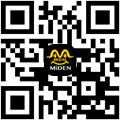Welcome to the official website of Guangzhou Miden Electronics Co., Ltd.
Address:2/F, Building 1, No. 33, Hongmian Avenue, Xinhua Street, Huadu District, Guangzhou, Guangdong, China
TEL:020-86882980/ 020-29135122
Sichuan Suining Factory
Address:No. 185, Mingyue Road, Economic and Technological Development Zone, Suining City, Sichuan Province
TEL:13302265948
Navigation
Contact us
COPYRIGHT © 2019 Guangzhou Miden Electronics Co., Ltd. all rights reserved
NEWS CENTER
Six main performance parameters of power inductance
Classification:
Company dynamics
Author:
Source:
Release time:
2019/03/21 10:20
Page view
Power inductance is a commonly used inductance. What are the main characteristics of power inductance?
Power inductance has six main factors:
1. The main performance parameters of power inductance are inductance L, DC resistance DCR, DC overlapping current Isat, temperature-rise allowable current Irms and self-harmonic frequency SRF.
2. Inductance is the nominal inductance value of inductance. Because of the existence of permeability and distributed capacitance, the inductance will vary with the frequency. The accuracy of inductance is generally M (+20%) or N (+30%).
3. DC resistance DCR refers to the total DC resistance of enamelled wires used between product electrodes.
4. DC overlapping current Isat means that the inductance of inductor will decrease under the condition of continuous through DC current. Generally, the specifications are set according to the current value when the inductance decreases by 30%.
5. Temperature rise allowable capacitive current Irms refers to the inductor in the case of continuous on-DC current, the inductor surface temperature will rise, generally according to the current value when rising 40 degrees Celsius to set specifications.
6. Self-harmonic frequency SRF refers to the interaction between inductance and distributed capacitance of inductance itself, which makes inductance reach resonance at a certain frequency. The resonance frequency is the self-harmonic frequency of inductance, and power inductance is required to be used below the self-harmonic frequency.
Key words:


